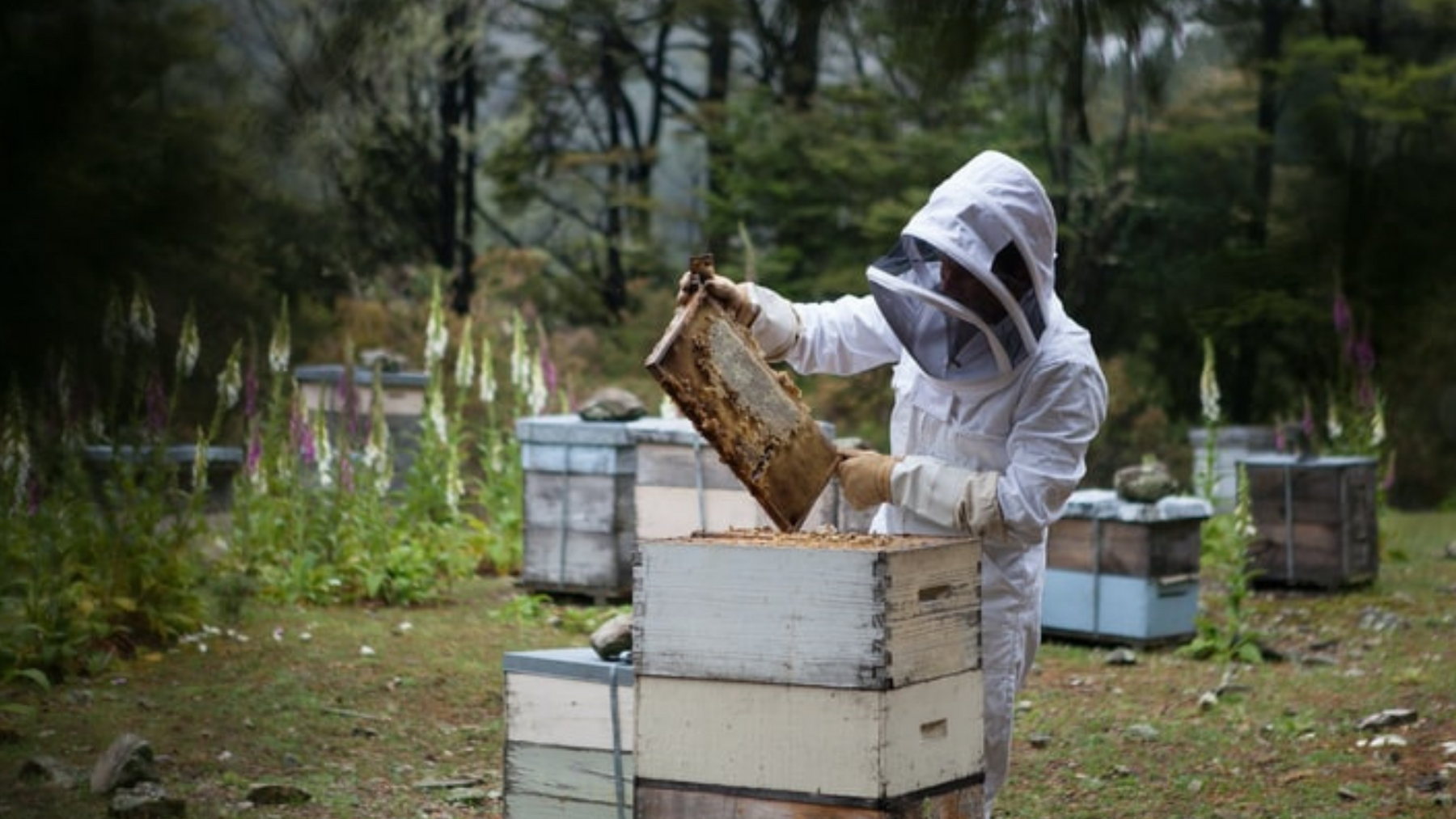
Importance of Bee Hive Inspections
Today we’re beginning a long series covering the topic of hive inspections. In this series, we’ll go in-depth into this beekeeping topic, covering all aspects of hive inspections. We’ll look at their importance, how frequently you should be doing them, tips and tricks and so much more.
Let’s get started!
Routine hive inspections are vital to ensure that your bees remain healthy and productive. Hive inspections should be performed on a regular basis, without fail. You can expect to spend between 30 to 60 minutes on each hive for a thorough hive inspection. If you have more than one hive, this time can add up quickly.
Times for hive inspections should be blocked out on your calendar on a regular basis (see frequency below). This time requirement should be taken into consideration if you are thinking about increasing the number of hives you manage, either through purchase, capturing swarms or splitting hives.
Exterior Hive Observations are Important
New beekeepers have been known to spend a lot of time sitting next to their hives, watching their bees’ comings and goings. Not only is it fun, but it’s educational for the beekeeper as well. You begin to evaluate the health of your hive just by the observations made during this time. Watching them at different times of the day can be beneficial, teaching you your hive’s habits and routines.
As you watch their activity, you’ll learn when the new bees take their orientation flights. You’ll discover when the housekeeping bees begin dumping the “trash” as they go about their housekeeping duties. You’ll see when the drones come home for the day. You’ll learn what activity to expect and when to expect it. Then, when the bees’ routine varies from the norm, you’ll see a red flag telling you that something is wrong. Then you’ll know, even if it’s not on your calendar, it’s time for a hive inspection.
Importance of Bee Hive Inspections
Hive inspections make it possible for you to catch problems early, when they’re still small, enabling you to divert a potential disaster in your hive.
Additionally, hive inspections help you understand your bees better. As you go about your inspections, you’ll learn what to expect from a particular hive. Then, when the bees’ behavior has changed, you know that something might be amiss, and you’ll need to check the hive more thoroughly. If they are more aggressive than usual, for instance, the hive may be queenless.
Hive inspections also give the bees an opportunity to get to know you. Some beekeepers swear that the more often they visit their hives, the more accepting the bees are of them.
Bee Hive Inspections Cause Stress
Although hive inspections are critical, opening the hive causes stress to your colonies; therefore, you don’t want to open the hive too often. Bees build their hives in dark cavities. In nature, these cavities stay dark and confined... in other words, safe. Opening the hive for inspections makes the bees feel unsafe, for themselves and their honey stores.
Stressed bees may:
- Abscond – vacate the hive for someplace deemed more desirable or safe
- Kill the queen
- Supersede the queen
Yes, hive inspections stress your bees, yet they are a tool that is essential for a healthy colony. Therefore, don’t be afraid to do a hive inspection, just use good judgment and don’t do them too frequently.
How frequently is too frequently? Join us next time when we’ll discuss just how frequently you should perform hive inspections as part of your beekeeping routine.
General Question About Bee Hive Inspections
1. How often should I perform hive inspections?
The frequency of hive inspections depends on the season and the condition of your hives. Typically, during the active season (spring and summer), inspections should be done every 7-10 days. In cooler months, inspections can be less frequent, about once every month or even less.
2. What should I look for during a hive inspection?
During a hive inspection, you should check for signs of a healthy queen, such as consistent egg-laying patterns and the presence of brood. Look for signs of disease or pests, such as Varroa mites or small hive beetles. Assess the hive's food stores, ensuring there is enough honey and pollen, and check for any structural issues within the hive.
3. What are the signs that my hive is stressed?
Signs of a stressed hive include unusual aggression, a decrease in activity, signs of swarm preparation (queen cells), and unexpected absconding. If the bees are more agitated or if you notice they are not maintaining their usual routines, it might indicate stress.
4. Can I inspect my hive too frequently?
Yes, inspecting your hive too frequently can cause stress to the bees. While hive inspections are necessary, over-inspection can lead to bees feeling unsafe, which might result in them absconding, killing the queen, or superseding her. It is important to balance the need for inspections with the bees' need for stability.
5. What time of day is best for hive inspections?
The best time for hive inspections is during the middle of a sunny day when most of the foraging bees are out collecting nectar and pollen. This reduces the number of bees inside the hive, making the inspection process smoother and less disruptive to the colony.




Leave a comment